Debora M Primrose Solutions for Chapter: Data-Based and Practical Questions (Human Physiology), Exercise 7: Practice problems for Option D
Debora M Primrose Biology Solutions for Exercise - Debora M Primrose Solutions for Chapter: Data-Based and Practical Questions (Human Physiology), Exercise 7: Practice problems for Option D
Attempt the practice questions on Chapter 15: Data-Based and Practical Questions (Human Physiology), Exercise 7: Practice problems for Option D with hints and solutions to strengthen your understanding. Oxford IB Prepared Biology IB Diploma Programme solutions are prepared by Experienced Embibe Experts.
Questions from Debora M Primrose Solutions for Chapter: Data-Based and Practical Questions (Human Physiology), Exercise 7: Practice problems for Option D with Hints & Solutions
The graph shows the sodium, potassium and cholesterol consumption in a diet of 1,000 children in a school compared to the recommended dietary intake.
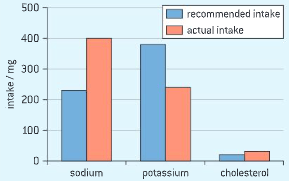
Outline one problem these children might have in the future due to their cholesterol intake in diet.
The graph shows the sodium, potassium and cholesterol consumption in a diet of children in a school compared to the recommended dietary intake.
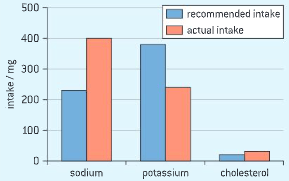
These children have high chances of hypertension in the future if they do not change their diet.
Comment on this statement.
Explain the hormonal mechanism that control the secretion of digestive juices.
Explain the causes and consequences of jaundice.
Explain the need for the time delay between the arrival and passing on of a stimulus at the atrioventricular node.
The diagram shows a section through the pancreas showing an islet of Langerhans.
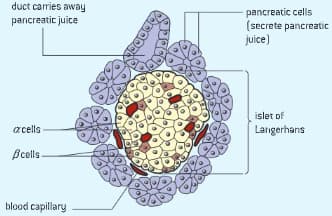
Identify the structure that show that the pancreas is both an exocrine and an endocrine gland.
A factor which adapts organisms to survive under low oxygen conditions is the presence of a substance in red blood cells called diphosphoglycerate (DPG). It affects the percentage saturation of hemoglobin as shown in the graph.
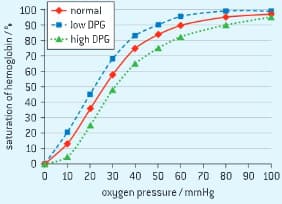
(a) Identify the effect of DPG on hemoglobin saturation.
A factor which adapts organisms to survive under low oxygen conditions is the presence of a substance in red blood cells called diphosphoglycerate (DPG). It affects the percentage saturation of hemoglobin as shown in the graph.
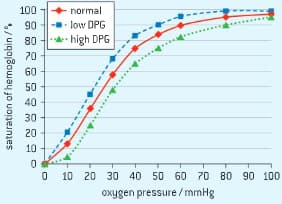
(b) Suggest with a reason the DPG levels in organism living at high altitude.
